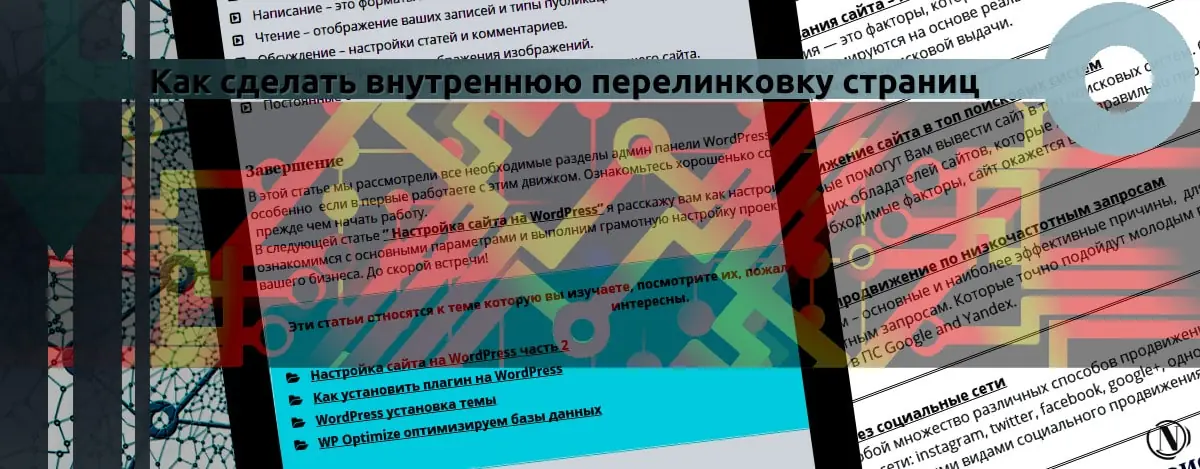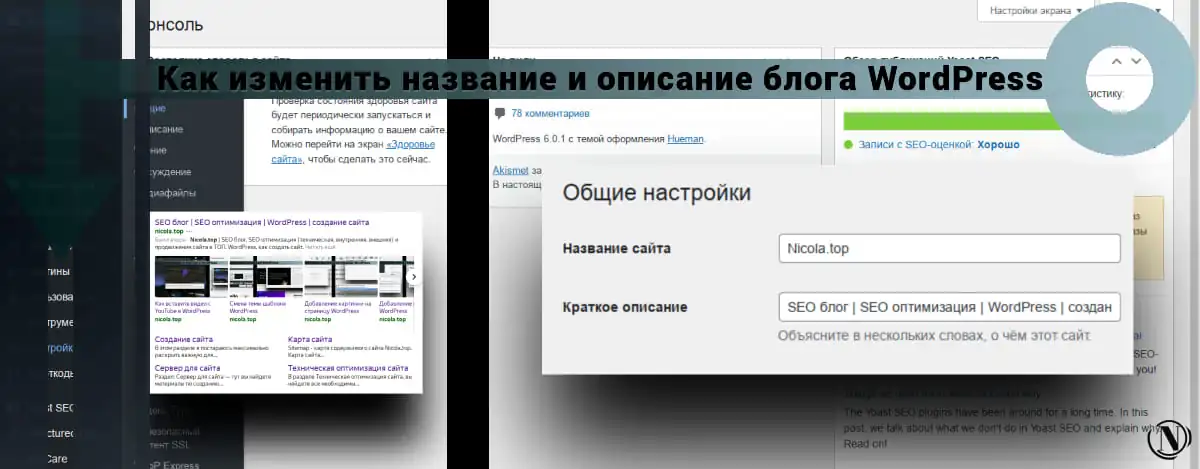Text Formatting: Best Tools, Styles, and Practices
 Welcome to our article on how to format text! If you want to know what text formatting is and what tools, styles and practices are best used to improve text design and readability, then you're in the right place. We will talk about text formatting tools such as: fonts, sizes and alignment. And also about additional tools such as color, underline, lists, etc. You will also learn about text formatting styles such as bold, italic, and underline. And also about the types of text formatting, including the selection of quotes, links, lists and other elements. We will provide answers and recommendations so that you can use these tools, styles and practices in the best possible way to improve your text.
Welcome to our article on how to format text! If you want to know what text formatting is and what tools, styles and practices are best used to improve text design and readability, then you're in the right place. We will talk about text formatting tools such as: fonts, sizes and alignment. And also about additional tools such as color, underline, lists, etc. You will also learn about text formatting styles such as bold, italic, and underline. And also about the types of text formatting, including the selection of quotes, links, lists and other elements. We will provide answers and recommendations so that you can use these tools, styles and practices in the best possible way to improve your text.
The content of the article:
- Introduction to text formatting
- Text formatting tools.
- Text formatting styles
- Paragraphs and text formatting
- Quote highlighting
- Links
- Lists
- Titles
- Text Formatting Best Practices
- Conclusion
- FAQ
Introduction to text formatting
 Text formatting is the process of changing the appearance of text in order to improve readability and visual appeal. It includes changing the font size and style, alignment, color, and other options that make the text clear and readable for readers.
Text formatting is the process of changing the appearance of text in order to improve readability and visual appeal. It includes changing the font size and style, alignment, color, and other options that make the text clear and readable for readers.
Why format text? Clearly formatted text not only grabs the reader's attention, but also makes reading easy and enjoyable. In addition, well-formatted text can improve structure, help highlight points, and cut out redundant details, all of which make text compelling and cohesive.
How can text formatting improve readability? Using the correct font, alignment, styles, and other formatting elements improves the readability of text, making it clear and easy to read. For example, reducing the font size makes text dense and compact, while using styles can help highlight information that needs attention.
Text formatting tools.
Fonts are one of the text formatting tools. The choice of font can affect the perception of text. Bold or large fonts are often used for headings, while thin and light fonts are often used for body text to make the text easier to read. The font size is also important, it should be large enough for the text to be readable, but not too large so as not to distract the reader.
In addition to fonts, additional text formatting tools include color, underline, lists, and more. Color is used to highlight keywords or information, but its use should be moderate and not interfere with the reading of the text. Underlining can be used to highlight links or for single words, but should also be limited. Lists can be used to organize information logically and make it easy to read.
Choosing the right text formatting tools depends on the purpose and characteristics of the text. For example, if the text contains many keywords, use color highlighting. If the text contains many sections, use heading levels and lists. However, you should not abuse the formatting, as this will lead to the fact that the text will be difficult to read and incomprehensible.
It is also important to remember that text formatting should be consistent and consistent throughout the document. This will help make the text look professional and easy to read. In addition, using formatting styles can simplify the formatting process and make it fast and efficient.
Text formatting styles
Text formatting styles is a way of changing the appearance of the text, which can be used to highlight the desired information or improve the appearance of the text. Basic text formatting styles include bold, italic, and underline. Fatty used to highlight desired words or phrases, italics is used to emphasize a word or phrase, while underline is used to emphasize importance.
Additional text formatting styles can include strikethrough text, capitalization text, and changing line spacing. Strikethrough text can be used to cancel certain words or phrases, capitalized text can be used to draw attention to headings or keywords, and changing line spacing can be used to improve text readability.
To use text formatting styles to enhance text design, it's important to understand which styles are appropriate for specific purposes. For example, bold text is used to highlight key words in a text, while italics is used to highlight quotes or examples. Using too many text formatting styles will lead to redundancy and make it harder to read, so use styles with moderation and only where necessary.
Paragraphs and text formatting
paragraphs are a tool for creating readable and easy-to-read text. The use of paragraphs helps to structure the text and highlight thoughts. For effect, make sure each paragraph contains only one idea and is short enough not to bore the reader.
In addition to paragraphs, there are other types of text formatting that help highlight information and improve readability. For example, use highlighting of quotes, links, and other elements to draw attention to key points in the text. You can also use different types of lists to improve the structure of the text and make it easy to read.
Using various types of text formatting helps to improve readability and improve the visual design of the text. When choosing formatting options, remember that the main thing is to maintain a balance between the structure and appearance of the text. Formatting types should be used in such a way that they not only make the text easier to read, but also emphasize its key ideas.
Quote highlighting
 Quotes - these are sections highlighted in the text containing quotations from other sources or words that you want to emphasize in the main text. They are used to draw attention to ideas, expressions, arguments, or to cite authoritative sources.
Quotes - these are sections highlighted in the text containing quotations from other sources or words that you want to emphasize in the main text. They are used to draw attention to ideas, expressions, arguments, or to cite authoritative sources.
You can use the following formatting tools to highlight quotes in text, such as indentation, italics, quotation marks, or blocks of text with a different background. It is important that the selection of quotations is clear and does not cause confusion in the text.
Quotes can be used to enhance text design, add visual interest, or highlight key ideas. They can also be used to clarify facts or arguments by citing authoritative sources and experts in a particular field.
For example, a quote by a famous writer and philosopher Friedrich Nietzsche: “Life would be a mistake without music” can be used to emphasize the importance of music in human life. You can use italics or quotation marks to emphasize this quote so that it is clearly visible in the text.
Links
 Links in the text are used to clarify information, confirm statements, improve usability, or draw attention to other material.
Links in the text are used to clarify information, confirm statements, improve usability, or draw attention to other material.
To create a link in the text, you need to select the text that will be the link and click on the appropriate button in the text editor or use a keyboard shortcut. Next, you need to enter the address (URL) of the site to which the text refers. To format the link, you can change its color, underline, set the link to open in a new window, and so on.
When using links, mistakes should be avoided, such as incorrect link format (errors in the address), the wrong choice of words to highlight the link, too many links on one page, the use of low-quality links, etc.
For example, a link to the official Google website: <a href="https://www.google.com/">Google</a>
Lists
 Numbered, Bulleted, and Nested Lists - These are types of lists that are used to structure information. Numbered lists help you list items in a specific order, while bulleted lists are used to list items that don't require a specific order. Nested lists are used when the elements inside the list require additional structuring.
Numbered, Bulleted, and Nested Lists - These are types of lists that are used to structure information. Numbered lists help you list items in a specific order, while bulleted lists are used to list items that don't require a specific order. Nested lists are used when the elements inside the list require additional structuring.
Lists help make text clear and easy to read, especially if it contains a lot of information. To use lists, you need to select the appropriate list type and start listing the items. It is better to use short phrases or keywords for list items.
To improve the visual design of text, you can use different formatting for lists. For example, you can change the line spacing, increase the indentation, or change the font color and size. It is important not to overdo the formatting and make the list easy to read.
Bulleted list example:
- Buy products
- wash the dishes
- Walk the dog
- Read a book
Titles
 Titles - this is a part of the text that helps to structure information and makes it easier to perceive. They allow the reader to easily identify what a given section of text is about, saving time and effort while reading.
Titles - this is a part of the text that helps to structure information and makes it easier to perceive. They allow the reader to easily identify what a given section of text is about, saving time and effort while reading.
The choice of heading level in the text is a very important aspect when formatting text. To select an appropriate heading level, you need to determine which section of the text is the main one and which are its subsections. The most important heading should have a higher level (for example, H1), and the rest should follow in order of decreasing level (H2, H3 etc.).
How to format headings to improve the visual design of the text? First, headings should stand out on the page by changing the font size, color, and/or style. Secondly, they must be center-aligned or left-aligned. Third, headlines that are too long should be avoided as they can be difficult to read and visually disturbing. Fourth, headings need to be formatted according to the target audience and the topic of the text.
Text Formatting Best Practices
Text formatting is an important element of SEO optimization. Using the right headings and paragraphs, using text highlighting and links can improve the understanding of content by search engines. More user-friendly and readable content increases user engagement and time on the site, which also has a positive effect on SEO.
For the correct division of text into headings and paragraphs, it is necessary to take into account not only the logical structure of the text, but also the preferences of users. It is important to use headings at the appropriate level and avoid creating blocks of text that are too large or small. By breaking up text into subheadings and paragraphs, you will improve its readability and allow users to quickly find the information they need.
Use text formatting styles such as bold, italic, and underlined text. As well as other formatting tools, such as lists and quote highlighting, help make content easy to read and understand. It is also important to use a clear and simple font and font size so that the content is easy to read across devices.
To avoid errors in text formatting, be sure to use headings correctly, use clear language, and avoid using overly technical terms. It is important to avoid excessive use of formatting, as this will create information overload and make it difficult to read. Also, avoid using keywords too much so that the content looks natural and is not suspicious for search robots.
Conclusion
In conclusion, I want to emphasize that text formatting is one of the most important factors for SEO optimization. Properly formatted text with the help of headings, lists, quotes and other tools not only increases the readability of the content, but also improves search engine performance.
In order to use text formatting effectively, I recommend using: tools and styles such as bold, italic, underlined text, and various font sizes and colors. However, do not forget that too much formatting can be the opposite, a negative factor for SEO.
In order to increase the readability of the text, I also recommend using paragraphs, headings and quotes correctly. Do not forget that the presence of keywords in titles and text in general is also important for search engines.
Finally, it's important to remember that text formatting is not an end in itself. The goal is to create easy-to-read, informative and understandable content for users. Using text formatting correctly and moderately, you can improve the quality of content and improve its position in search engines.
FAQ
What is text formatting and how does it affect SEO?
Text formatting is the process of improving the appearance and readability of text using a variety of tools and styles. This is important for SEO, as it helps search engines determine the structure and themes of content, and improves the readability and perception of information for users.
How to choose the right heading level?
A: Proper choice of heading level is important for dividing text into logical parts and improving readability. H1 is used for the page title, H2 for sections, H3 for subsections, and so on. The choice of heading level depends on the importance of the topic and subtopic, as well as the structure of the text.
Q: How can I use lists to improve the visual design of text?
Lists can be numbered or bulleted and are used to structure information and improve readability. To improve the visual design of text, it is recommended that you use proper list formatting, such as uniform indentation and spacing between list items.
How to avoid errors in text formatting?
To avoid errors in text formatting, you need to follow the recommendations for using formatting tools and styles, break text into paragraphs and headings correctly, avoid excessive use of bold and italics, and so on. You should also check the text for errors before publishing.
Reading this article:
- How to Write an Article Review: A Complete Guide for Students and Professionals
- How to write cool articles for the site: tips
Thanks for reading: SEO HELPER | NICOLA.TOP










Hey I know this is off topic but I was wondering if you knew of any widgets I could add to my blog that automatically tweet my newest twitter
updates. I've been looking for a plug-in like this for quite some time and was hoping maybe you would have some experience with something
like this. Please let me know if you run into anything.
I truly enjoy reading your blog and I look forward to
your new updates.